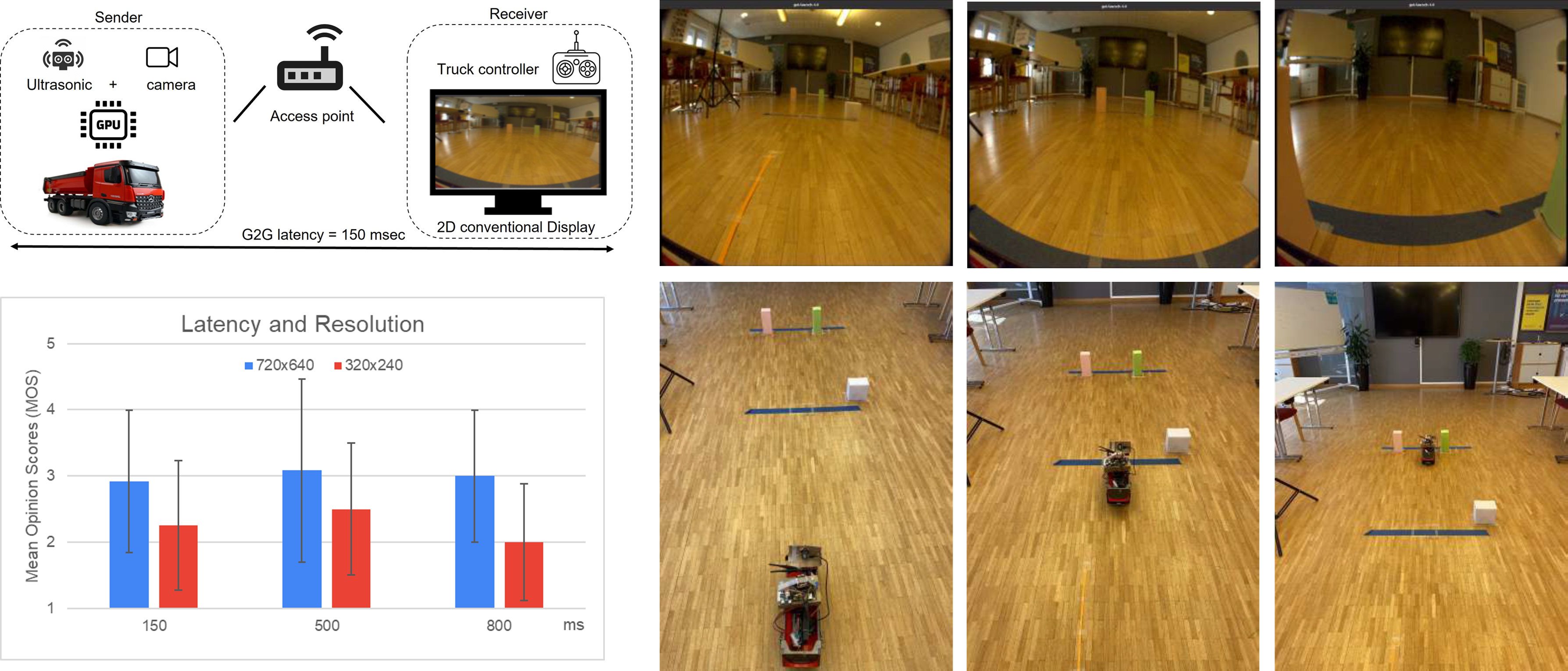
In this study, we designed an experiment using remote-controlled lab based moving platform to evaluate the impact of resolution, latency, and field of view on the Quality of Experience, performance, user experience and depth perception. The experiment involves two tasks: driving the platform to a stop point and parking it between two boxes. Participants provided feedback through questionnaires, and their experiences were analyzed. Seven participants between 30 and 57 (average of 37) years old participated. We used Google Forms for data collection, including pre-experiment and recurring questionnaires as well as a simulator sickness questionnaire. Despite the low number of test participants leading to uncertainty in quantitative analysis, significant effects were observed, albeit with contradictory statistical outcomes. The data suggests that lower latency corresponds to better performance, with participants not always perceiving higher latency accurately. Video quality notably impacts user experience, with higher resolution being preferred.

This work presents the results of a psycho-physical experiment in which a group of forty (40) human participants rated the overall quality of a set of 40 high-definition audio-visual sequences. These audio-visual sequences were impaired with audio and video types of distortions commonly encountered in an Internet-based transmission scenario. More specifically, Packet-Loss and Frame Freezing distortions were added to the video component, while Background noise, Chop, Clipping, and Echo distortions were added to the audio component. Our goal was to study how audio and visual degradations interact with each other and with the content to produce the overall audio-visual quality. An immersive experimental methodology was used to obtain more accurate observer scores. Preliminary results show that the audio and video degradations interact with each other to produce the overall audio-visual quality. For different types of audio degradations, the Clip degradation obtained slightly lower quality scores. Similarly, for the different video degradations, Framefreezing distortions were rated higher. Also, when audio degradations were combined with Packet-loss, they had a stronger impact on the audio-visual quality.